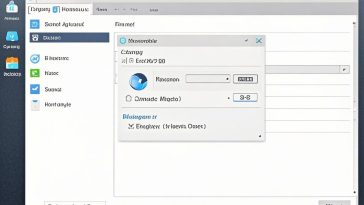Introduction
Effective inventory management is crucial for businesses of all sizes, as it helps ensure adequate stock levels, minimize carrying costs, and meet customer demand efficiently. While dedicated inventory management software exists, many companies opt for a more cost-effective and customizable solution: Microsoft Excel. This versatile spreadsheet program offers a wide range of features and functionalities that can be leveraged to create a robust inventory management system tailored to your specific needs.
Setting Up the Inventory Worksheet
The first step in creating an inventory management system in Excel is to set up a dedicated worksheet for your inventory data. You can either create a new workbook or use a pre-designed inventory template available online or within Excel.
Labeling Columns
Start by labeling the columns with essential inventory data fields, such as:
- Item Name
- Item Code or SKU
- Quantity on Hand
- Reorder Level
- Reorder Quantity
- Supplier
- Unit Cost
- Location or Warehouse
Formatting the Worksheet
Proper formatting can enhance the readability and usability of your inventory worksheet. Consider adjusting column widths to accommodate the data, applying filters or conditional formatting to highlight critical information, and using clear headers or titles for each section.
Data Entry and Organization
Once your worksheet is set up, you can begin entering your inventory data. If you have existing inventory records, you can import the data directly into Excel using various import options (e.g., copy-paste, text file import, database connections). Alternatively, you can enter the data manually.
Using Data Validation
To prevent errors and maintain data integrity, consider using Excel’s data validation feature. This allows you to restrict the input in certain cells based on predefined criteria, such as limiting quantities to numerical values or providing a drop-down list of available item codes.
Sorting and Filtering
As your inventory grows, it becomes increasingly important to sort and filter the data for easy reference. Excel’s built-in sorting and filtering capabilities allow you to quickly organize your inventory list by item name, category, supplier, or any other relevant criteria.
Inventory Tracking and Calculations
One of the primary functions of an inventory management system is to accurately track stock levels and generate alerts when inventory needs to be replenished.
Calculating Stock Levels
Use formulas in Excel to calculate the current stock level based on purchases and sales. For example, if cell A1 contains the initial quantity and B1 contains the quantity sold, you can use the formula =A1-B1 to calculate the remaining stock.
Reorder Level Alerts
Set up formulas or conditional formatting rules to highlight items that have reached their reorder level. This can be done by comparing the current stock level to a predefined reorder level and generating a visual alert (e.g., color-coding the cell) or a notification message.
Incorporating Safety Stock and Lead Times
To account for potential delays or unexpected spikes in demand, consider incorporating safety stock levels and supplier lead times into your inventory calculations. These additional buffers can help prevent stockouts and ensure a smoother inventory management process.
Reporting and Analysis
An effective inventory management system should provide clear and concise reports to help you make informed decisions.
Summary Reports
Create summary reports that provide a high-level overview of your inventory status, such as total stock value, top-selling items, or items with low stock levels.
Detailed Reports
Generate detailed reports filtered by category, supplier, location, or any other relevant criteria. These reports can include additional information like item descriptions, images, or notes.
Charts and Graphs
Excel’s charting capabilities can help you visualize inventory trends and patterns more effectively. Consider creating charts or graphs to track stock levels, sales, or demand over time.
Inventory Forecasting
Accurate demand forecasting is essential for optimizing inventory levels and minimizing carrying costs. Excel provides several forecasting functions and tools that can help you predict future demand based on historical data.
Analyzing Historical Data
Start by analyzing your historical sales or demand data to identify patterns and trends. Look for seasonal variations, market trends, or other factors that may influence future demand.
Using Forecasting Functions
Excel’s built-in forecasting functions, such as FORECAST.LINEAR and FORECAST.ETS, can be used to generate demand forecasts based on your historical data. These functions use various statistical techniques to extrapolate future values from past data.
Incorporating External Factors
In addition to historical data, consider incorporating external factors that may impact demand, such as market conditions, competitor activity, or economic indicators. These factors can be included in your forecasting models or used to adjust the forecasted values manually.
Inventory Optimization
Once you have a solid understanding of your inventory levels and demand forecasts, you can optimize your inventory management system to minimize carrying costs and maximize efficiency.
Identifying Slow-Moving or Obsolete Items
Use Excel’s filtering and sorting capabilities to identify slow-moving or obsolete items in your inventory. These items may be candidates for clearance sales, product discontinuation, or inventory reduction strategies.
Calculating Economic Order Quantities (EOQ)
The Economic Order Quantity (EOQ) is a widely used inventory management technique that helps determine the optimal order quantity that minimizes the total inventory holding costs and ordering costs. Excel can be used to calculate the EOQ based on factors such as demand, ordering costs, and carrying costs.
Implementing Inventory Management Techniques
Explore various inventory management techniques that can be implemented or simulated in Excel, such as ABC analysis (categorizing items based on their value or demand), just-in-time (JIT) inventory management, or vendor-managed inventory (VMI) systems.
Integration with Other Systems
To streamline your inventory management processes further, consider integrating your Excel-based inventory system with other systems or data sources.
Linking to Accounting or Sales Data
Use Excel’s data connectivity features, such as Power Query or Get & Transform, to link your inventory worksheet to accounting software, sales databases, or other relevant data sources. This integration can automate data entry, ensure consistency, and provide a centralized view of your inventory and financial data.
Automating Data Import and Export
Leverage Excel’s automation capabilities, such as macros or VBA scripts, to automate data import and export processes. This can include tasks like automatically importing sales or purchase order data, generating periodic inventory reports, or exporting data to other systems or formats.
Advanced Features and Customization
As your inventory management needs grow, you may need to explore advanced features and customizations within Excel to enhance the functionality and efficiency of your system.
Creating Macros and User-Defined Functions
Excel’s macro recorder and Visual Basic for Applications (VBA) can be used to create custom macros and user-defined functions that automate repetitive tasks or implement complex calculations and logic within your inventory system.
Using Excel Add-ins or Third-Party Tools
Consider exploring Excel add-ins or third-party tools specifically designed for inventory management. These tools can provide additional features, templates, and functionality tailored to your industry or business requirements.
Customizing for Specific Business Needs
Excel’s flexibility allows you to customize your inventory management system to meet your specific business needs. This could include creating custom dashboards, implementing unique inventory policies or rules, or integrating with specialized software or hardware used in your operations.
Security and Backup
As your inventory management system becomes more critical to your business operations, it’s essential to implement proper security and backup measures to protect your data and ensure continuity.
Protecting Worksheets and Workbooks
Use Excel’s built-in protection features to prevent accidental or unauthorized changes to your inventory data. This can include password-protecting worksheets, locking specific cells or ranges, or restricting access to sensitive formulas or macros.
Implementing Version Control and Backup Strategies
Establish a version control system for your inventory workbook, ensuring that changes are tracked and previous versions are preserved. Additionally, implement regular backup procedures to safeguard against data loss due to hardware failures, software issues, or other unforeseen events.
Sharing and Collaborating
If multiple users need to access and update the inventory system, consider using Excel’s sharing and collaboration features, such as SharePoint integration or cloud-based file sharing services. This can ensure that everyone is working with the latest version of the data and minimize conflicts or data inconsistencies.
Best Practices and Maintenance
To ensure the long-term success and reliability of your Excel-based inventory management system, it’s crucial to follow best practices and regularly maintain and update the system.
Regularly Auditing and Updating Inventory Data
Conduct periodic physical inventory counts or audits to ensure the accuracy of your inventory data. Update the system with any discrepancies or changes in stock levels, item descriptions, or pricing information.
Training Employees
Provide comprehensive training to employees who will be using the inventory management system. Ensure they understand how to navigate the system, enter data correctly, and interpret the reports and calculations generated by Excel.
Seeking Professional Help or Resources
For complex inventory scenarios or advanced customization needs, consider seeking professional help or consulting with Excel experts or inventory management consultants. They can provide guidance, best practices, and recommendations tailored to your specific business requirements.






